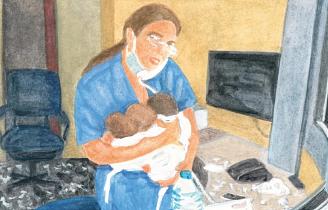Lebanon’s Chernobyl
The last time I was in Beirut was the fall of 2019, when Lebanon was in the throes of angry, hopeful protests. What started as street riots over a new tax had quickly ballooned into a national movement demanding an end to corruption and to the flagrant mismanagement of the country’s resources. It also called for sweeping away the entire Lebanese political elite, many of whom were the same warlords who had fought in the civil war of 1975–1990, had never been held accountable for it, and had gone on to entrench their power within the country’s deeply sectarian political system. The demonstrators, whose slogan was “All of Them Means All of Them” (i.e., get rid of all of them), rejected the mafia-like system in which the leaders of each religious community doled out favors, jobs, and public resources in exchange for loyalty while enriching themselves the most.
As it turned out, the protests were too little, too late. Lebanon was in the grip of an economic crisis that was about to get much worse. The exchange rate of the lira to the dollar was slipping on the black market; for years Lebanese banks had been offering unreasonably high interest rates to attract dollars in what many have described as a Ponzi scheme. By the end of 2019 the entire house of cards was collapsing. Banks set limits on how much money depositors could take out of their accounts, even as they allowed the country’s elite, who had hugely benefited from the shortsighted financial engineering, to move their fortunes abroad. The value of the lira plummeted, inflation soared, and the Lebanese thawra (revolution) stalled before it was halted by the advent of Covid.




